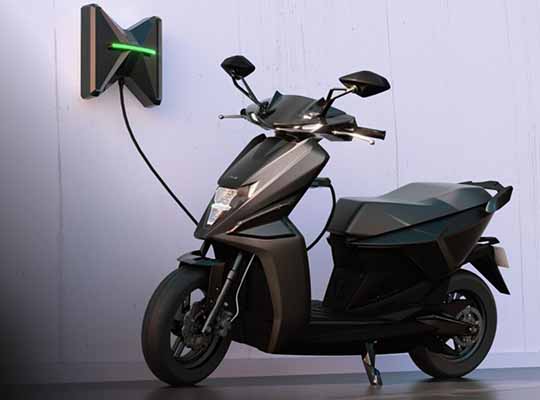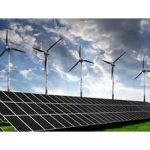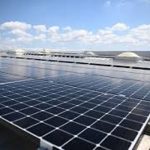SELBYVILLE : The electric two-wheelers market is expected to record a valuation of USD 100 billion by 2030, according to the most recent study by Global Market Insights Inc.
The emerging electric micro-mobility trends across regions such as Latin America and the Middle East due to increasing vehicle emissions and rising air pollution levels are likely to foster industry development during the forecast period. The sales of new electric two-wheelers could go beyond 150 million units by 2030. However, the lack of appropriate charging infrastructure in countries like Mexico, Brazil, and India may hamper the electric two-wheelers market expansion. Increasing strategic alliances between government and private players may stimulate the demand for electric two-wheelers.
High reliability to increase the demand for SLA batteries
SLA batteries may drive lucrative growth opportunities to the electric two-wheelers market owing to their comparatively lower production costs and availability in an expansive range and voltage configurations. Their improved working capabilities, reliability, and ability to withstand long-term inactivity will push their adoption in the years to come.
The frame-mounted motor segment is estimated to attain 6% growth rate till 2030. Mid-motors are perfect for off-road terrains on account of their higher energy conversion rate, better torque, and improved center of gravity. These motors combine bike gears and gearing systems to elevate efficiency during uphill pedaling.
Growing demand for long-distance traveling to spur 72V battery segment
The electric two-wheelers market from 72V motor power segment is likely to grow at about 7% gains by 2030, credited to its wide range of applications in electric motorcycles and e-bikes. A higher voltage system in these batteries enables the use of lower current while charging the battery, which helps improve power retention and avoid overheating. These batteries are capable of running long distances, which may fuel their demand in the years ahead.
High functional characteristics to increase above 6.5kW segment share
The above 6.5kW segment in the electric two-wheelers market is foreseen to cross USD 20 billion through 2030. Electric two-wheelers, preferably motorbikes, with above 6.5kW motor speed are gaining massive popularity among consumers. Larger motors drive more output than smaller ones and thus are more efficient. They consume less power or take up less current while offering greater torque. These attributes will accelerate the market growth.
Cost-efficiency factor to boost the demand for electric two-wheelers
The electric motorcycle market could depict a CAGR of more than 4% through 2030. This growth is attributed to their enhanced cost-effectiveness and fuel efficiency. In addition, the collaborative efforts of the government and industry participants have paved the way for manufacturing advanced high-performance electric motorcycles.
North America to remain a major growth hub for the industry
The North American electric two-wheelers market is projected to exceed USD 6 billion by 2030 impelled by increased adoption of electric micro-mobility solutions and rising concerns about environmental sustainability. The region has witnessed a significant rise in carbon emissions and vehicular traffic, which has encouraged authorities to regulate the use of fuel-based vehicles, propelling electric two-wheeler sales.
New product development to emerge as a pivotal growth strategy for companies
Leading players in the electric two-wheelers market include Niu Technologies, Yadea Group Holdings Ltd., Giant Bicycles, Segway, Inc., and Zero Motorcycles, along with Hero Electric, SUNRA, Okinawa Autotech Pvt. Ltd., and Vmoto Limited. These firms have been adopting several growth tactics to safeguard their position in the market.
Table of Contents (ToC) of the report
Chapter 3 Electric Two-Wheelers Market Insights
3.1 Industry segmentation
3.2 Impact of COVID-19 on electric two-wheelers industry landscape
3.3 Russia-Ukraine war impact
3.4 Industry ecosystem analysis
3.5 Technology & innovation landscape
3.5.1 Brushless DC motor (BLDC)
3.5.2 Permanent magnet motor
3.6 Regulatory landscape
3.7 The evolution of electric vehicle charging infrastructure
3.8 Electric vehicle chargers type analysis
3.9 Industry outlook on multi-purpose EV charging tower
3.10 Electric two-wheeler charging infrastructure current and future outlook, by region
3.11 Industry impact forces
3.11.1 Growth drivers
3.11.1.1 Increasing government support for the promotion of e-mobility across the globe
3.11.1.2 Growing presence of electric two-wheeler manufacturers in North America and Europe
3.11.1.3 Shifting focus of commuters on personal mobility solutions in North America
3.11.1.4 Rising concerns about pollution levels in Asia Pacific
3.11.1.5 Increasing awareness related to electric mobility in LATAN & the MEA
3.11.2 Industry pitfalls & challenges
3.11.2.1 High initial cost of electric two-wheelers
3.11.2.2 Limited charging infrastructures in developing economies
3.12 Growth potential analysis
3.13 Average selling price trend analysis, by vehicle type
3.14 Porter’s analysis
3.15 PESTEL analysis











